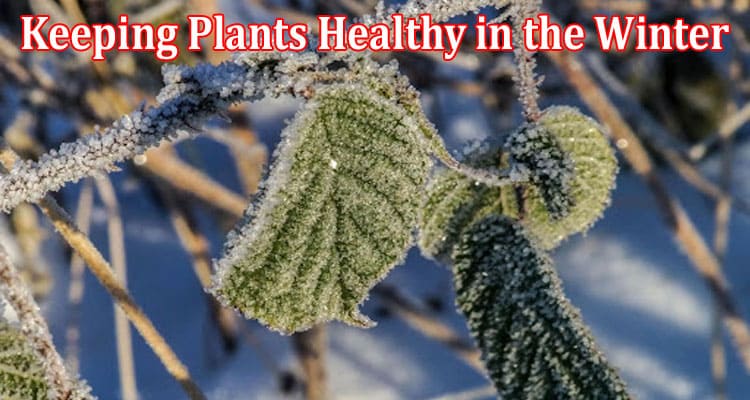Keeping Plants Healthy in the Winter – A Guide to Winter Care for Perennials
Winter can be challenging for gardeners, as cold temperatures, frost, and reduced sunlight can take a toll on plants. However, with proper care and attention, it is possible to keep your garden thriving even in the coldest months of the year. In this detailed guide, we will thoroughly examine five different topics. Beautiful native plants: Blue Cohosh, Black Cohosh, Butterfly Weed, Virginia Bluebells, and Cardinal Flowers, and discuss the best practices for ensuring their health and survival during the winter season.
1) Blue Cohosh (Caulophyllum thalictroides) Blue Cohosh, also known as Papoose Root or Squaw Root, is a unique and intriguing woodland perennial native to North America. This plant is prized for its vibrant blue-green foliage and delicate, bell-shaped flowers that bloom in early spring. To keep Blue Cohosh healthy during the winter months, consider the following tips:
Mulch: Apply a layer of mulch around the base of Blue Cohosh to protect its root system from freezing temperatures. This technique will also help keep the soil moist and preventing it from drying out is essential. This can be achieved by retaining moisture in the ground.
Adequate Watering: While it may seem counterintuitive, watering your Blue Cohosh occasionally during the winter, especially in regions with dry winters, is essential. Water deeply but infrequently to prevent root rot.
Shelter: If possible, provide some shelter or windbreak to shield Blue Cohosh from harsh winter winds. This will help prevent desiccation and frost damage.
Pruning: Avoid pruning Blue Cohosh during the winter. Instead, wait until spring when the plant starts to show signs of new growth.
2) Black Cohosh (Actaea racemosa) also known as Bugbane or Black Snake Root, is a striking perennial native to eastern North America. It is famous for its tall spires of white, fragrant flowers and deeply divided, dark green foliage. To ensure the health of your Black Cohosh during the winter, follow these guidelines.
Mulch: Apply a generous layer of mulch around the base of Black Cohosh to protect its roots from freezing. Mulch also helps conserve moisture and regulate soil temperature.
Adequate Drainage: Ensure the soil drains well, as Black Cohosh is susceptible to root rot. Avoid soggy conditions, especially during the winter months.
Pruning: Wait until late winter or early spring to prune Black Cohosh. Remove dead or damaged stems to encourage new growth.
Snow Cover: In regions with heavy snowfall, the natural insulating properties of snow can protect Black Cohosh from extreme cold. However, be cautious not to pile excessive snow on the plant.
3) Butterfly Weed (Asclepias tuberosa) is a native perennial known for its vibrant orange, red, or yellow flowers that attract pollinators like butterflies and bees. To maintain the health of Butterfly Weed during the winter, consider the following care tips.
Pruning: In late fall or early winter, cut back the dead stems of Butterfly Weed to about 6 inches above the ground. This helps the plant conserve energy and promotes healthy regrowth in the spring.
Mulch: Mulching around the base of a plant can help protect its roots from damage and keep them healthy in freezing temperatures. Avoid covering the plant’s crown with mulch, which can lead to rot.
Avoid Overwatering: Butterfly Weed prefers well-drained soil. During the winter, reduce watering to prevent root rot. Only water when the soil appears dry. d. Leave Seed Heads: Consider leaving some seed heads on the plant over the winter, as they can provide food for birds and add visual interest to your garden.
4) Virginia Bluebells (Mertensia virginica) are enchanting woodland perennials native to eastern North America. They are prized for their clusters of nodding, bell-shaped flowers that transition from pink to blue as they mature. To keep Virginia Bluebells healthy in the winter, follow these steps:
Mulch: Apply a mulch layer around the Virginia Bluebell base to protect the shallow root system from freezing temperatures. Make sure not to smother the plant, leaving space around the crown.
Avoid Disturbance: Virginia Bluebells are sensitive to disturbance. Avoid walking on or around them during the winter, as this can damage the emerging foliage.
Minimal Pruning: Virginia Bluebells typically don’t require much pruning. However, if you notice dead or diseased growth, you can remove it in late winter or early spring.
Naturalizing: Virginia Bluebells can naturalize and spread in the garden. If this is not desired, consider thinning out the plants in the spring to maintain control.
5) Cardinal Flowers (Lobelia cardinalis) are stunning perennials native to North America, known for their vibrant red tubular flowers that attract hummingbirds. Adding plants can bring a pop of color to your garden even in the winter months with the proper care:
Mulch: Apply a layer of mulch around the base of Cardinal Flowers to insulate the root system, which needs protection from freezing temperatures. Be cautious not to bury the crown.
Cut Back: In late fall or early winter, cut back the spent flower stalks and remove any dead or diseased foliage to encourage healthy growth in the spring.
Adequate Moisture: Ensure that Cardinal Flowers receive sufficient moisture during the winter, especially in regions with dry winters. Water deeply but infrequently to prevent root rot.
Divide and Replant: Over time, Cardinal Flowers can become overcrowded. Consider dividing and replanting them in the spring to maintain vitality and vigor.
Conclusion: Maintaining the health of your garden during the winter months requires attention to detail and careful planning. By following these tips for Blue Cohosh, Black Cohosh, Butterfly Weed, Virginia Bluebells, and Cardinal Flowers, you can help these beautiful native plants survive and thrive during the cold season. With the proper care, your garden can continue to be a source of beauty and enjoyment year-round.




